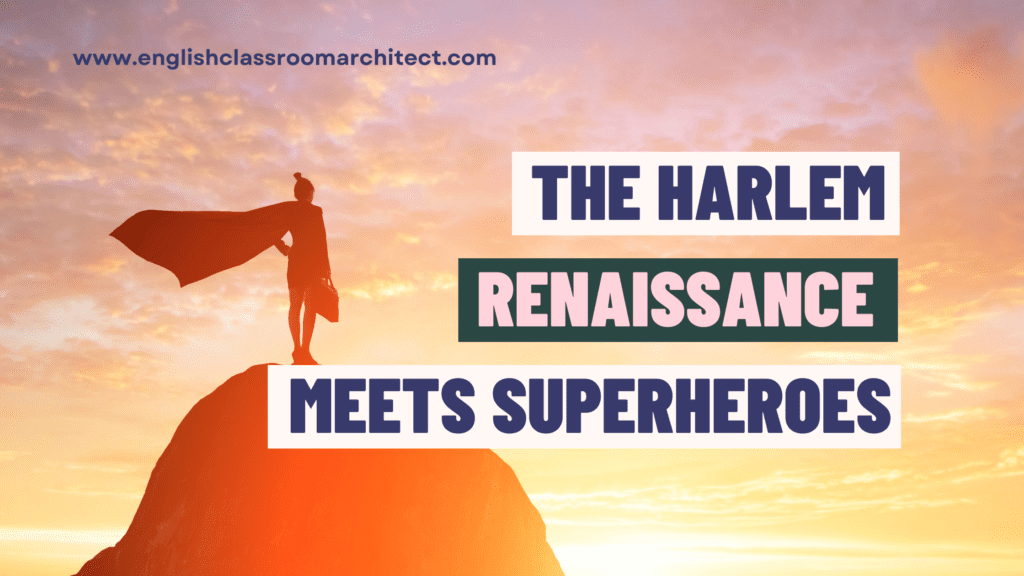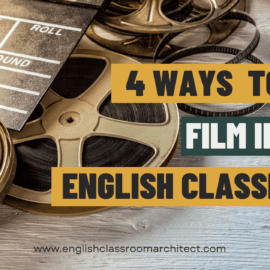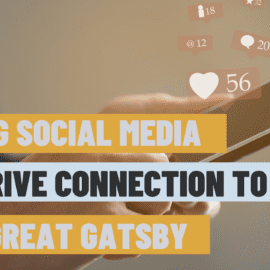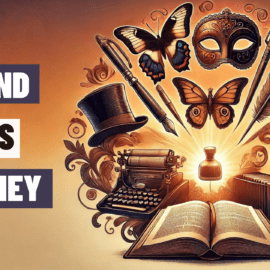Open your baskets. For the appetizer round you must incorporate frozen pizza, rice noodles, crawfish, and licorice candy. Twenty minutes. Time starts now.
In the cooking show Chopped, a chef’s creativity is fueled by restriction. Contestants must use the basket ingredients in a thoughtful way. If an ingredient is simply a garnish they will find themselves chopped.
What does this have to do with teaching? Plenty.
Unfortunately, teachers treat the Harlem Renaissance as an aside, if they teach it at all. American literature textbooks tend to present the movement as a minor blip, mirroring the irony of the naming of the Blip as the reversal of Thanos’ Snap in the Marvel comics stories.
Taking inspiration from reality television, we can merge two seemingly different but culturally rich worlds: the Harlem Renaissance and superhero comics to create a rich Harlem Renaissance unit.
As a strategy, uncommon connections can spur our creativity as teachers by helping us make interesting connections and finding real-world parallels to inspire our students.

Uniting Themes of Power and Transformation (Harlem Renaissance & Superheroes)
The world was riveted by The Black Panther movie. Statistics about the Black Panther movie here. It was the highest ranking standalone Marvel film coming in at a whopping $1.3 Billion worldwide.
Here’s my question: what is the secret to why Marvel has had incredible success while DC Comics has…not?
Stan Lee’s cameos? Maybe.
But maybe there’s something about the formula.
I was intrigued when Netflix started using its algorithm data to create movies. Maybe that same idea could serve as inspiration for a student project.
So here are my basket ingredients: The Harlem Renaissance, The DC Comics hero Icon, and movie goer promotional package for a boutique movie theater.
Project Overview: A Fusion of Eras and Genres for a Harlem Renaissance Unit
Like superhero comics, Harlem Renaissance authors explore overlapping topics like identity, social justice, and transformation.
Okay, so do a lot of texts/films/stories. How do these two topics really merge?
Let’s take a closer look at Black Panther.
Here is where the project could really start. Sometimes we are quick to give students an answer, but try starting students right here. What is it about Black Panther? Was it the timing and what was happening in the world? Was it the actors? The marketing? The fusion of black culture? The storyline itself? Students could research the film and the surrounding factors and make some theories and then use their hypotheses in the next step.
The next step…
As I mentioned before, I find the Marvel movies much more compelling than those in the DC universe. While I did like Aquaman, I can’t tell you how many times I fell asleep on all the different iterations of Batman (why do they keep making them? Why do we keep watching them? That’s another lesson in itself).
But, I did wonder if there was a DC parallel story to Black Panther’s. When I started looking into the history of the comic I fell down a rabbit hole. Learning about the role the comic served in the The Avenger saga and the interplay with the contemporary issues of the day were interesting. My mind was spinning thinking about ways to bring in black culture and history and connect to pop culture.
But the more I unraveled Marvel history the more I wondered why DC didn’t try to ride the wave of popularity of Black Panther. I found that DC Comics doesn’t really have a prominent African American superhero, but I did find the superhero Icon from Milestone Comics.
- DC Comics serves as the parent company of Milestone Comics. Milestone Comics started as a coalition of African American writers wanting to improve the diversity of characters in American comics.
- One unique feature of Icon is that he has conservative political views, which can make for an interesting storyline when put in the same universe as Harlem Renaissance leaders.
(Another interesting side-quest could be looking at the Milestone Comics superhero Black Lightning and how the hero connects with black culture then and now.)
To make a really broad comparison, he’s a lot like Superman. He’s basically invincible, super strength, he can fly.
Because of the invincibility, he lived through multiple generations. His adoptive mother was a slave, he lived as a sharecropper, through the Harlem Renaissance, during the Civil Rights Movement, and into today.
Ummm…are you forgetting about the Chopped basket?
With all of this research collected I had a pile of interesting nuggets and ideas. There are many interesting ways to go, but I decided to use one of my favorite strategies, the whole-class collaborative project, to challenge my students to really dig into the Harlem Renaissance.
My grand vision: create a unique experience where my students could showcase their talents and hard work to their peers.
The challenge: taking inspiration from a local boutique theater, create a movie premiere event for a film featuring the character Icon set during The Harlem Renaissance.
Key components:
- Explore Icon’s Harlem Renaissance-based storyline through an original storyboard and script.
- Create Harlem Renaissance-inspired food menus.
- Craft engaging pre-movie featurettes.
- Market the event to teachers and administrators to attend their event.
Empowering Education Through Cross-Curricular Learning and Student Engagement
Just as chefs on the cooking show Chopped transform seemingly mismatched ingredients into culinary masterpieces, educators can blend diverse elements of culture and literature to create engaging learning experiences for students.
The Harlem Renaissance often gets sidelined, much like those Ramen noodles the chefs try to add as garnish when not knowing what to do with them. Yet, by drawing parallels between this pivotal cultural movement and the dynamic world of superhero comics, educators can create a rich and flavorful Harlem Renaissance unit that captivates students’ imaginations.
- Educational Value: This interdisciplinary project holds immense educational value for high school classrooms. By integrating elements of history, literature, and popular culture, students are exposed to a comprehensive understanding of cultural movements and societal dynamics.
- Fostering Critical Thinking and Creativity: Through this project and embedded “everyday” research, students are challenged to think critically about the intersections between historical events and contemporary cultural representations. By exploring themes of identity, social justice, and transformation, students engage in deep reflection and analysis, fostering creativity and nuanced understanding.
- Anticipated Outcomes: Participating in this project promises a multitude of outcomes for students. From increased historical awareness to enhanced creative expression, students emerge with a deeper appreciation for the complexities of the Harlem Renaissance and its relevance to modern-day society. Additionally, collaborative skills are honed as students work together to bring their ideas to life.
- Relating Concepts to Contemporary Issues: One of the project’s strengths lies in its ability to bridge the past with the present. Students not only gain insight into historical movements but also learn to critically examine contemporary issues through a cultural lens. By exploring how themes of power, identity, and social justice manifest in both historical and modern contexts, students develop a deeper understanding of the world around them.
In this fusion of eras and genres you can help your students discover that learning transcends the confines of textbooks and classrooms, embracing the richness of culture and the boundless possibilities of imagination.



